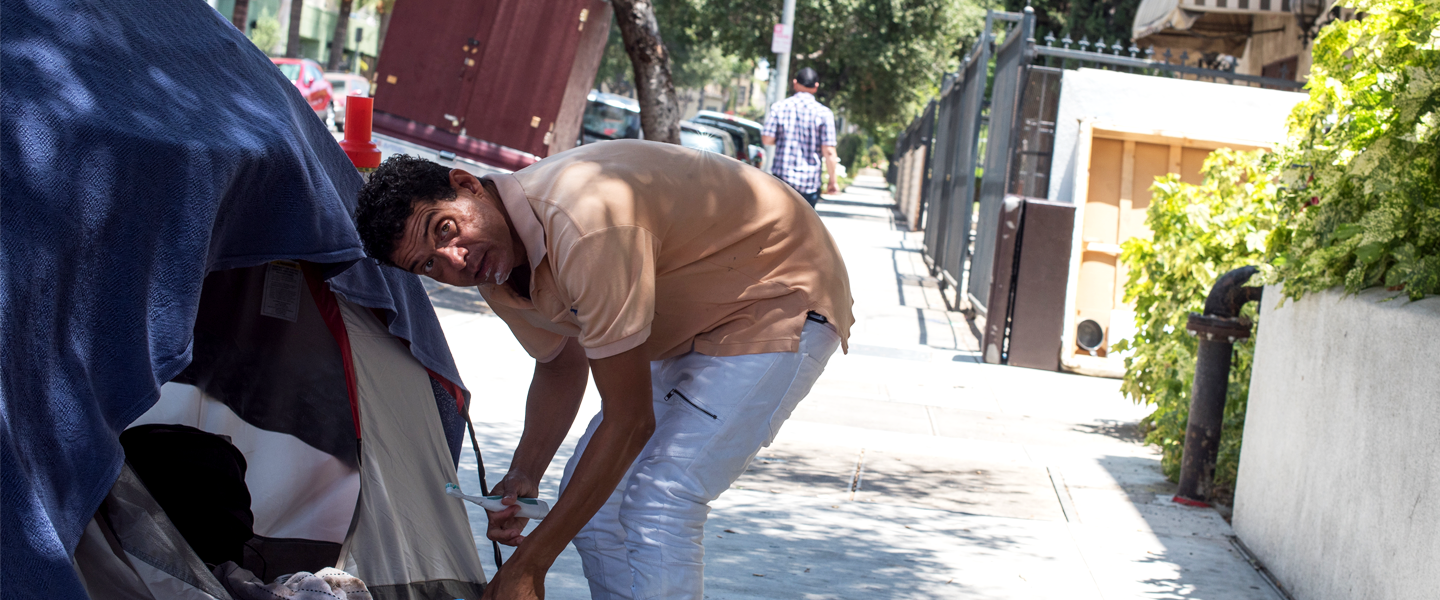The toughest part of landing on the street for Chris wasn’t the lack of privacy while he slept, or the cops that came around to shoo him off the block, or even the rats that ventured out of the storm drain near his tent at night, sending gross shivers down his spine every time. No, after three weeks of living on the street, Chris decided that the most unpleasant variable was how cold and damp a sidewalk could feel, even during the L.A. summer. He tossed and turned at night, feeling both hot and cold, awash in questions about how long he would be on the street — and what it would take to have a home again.
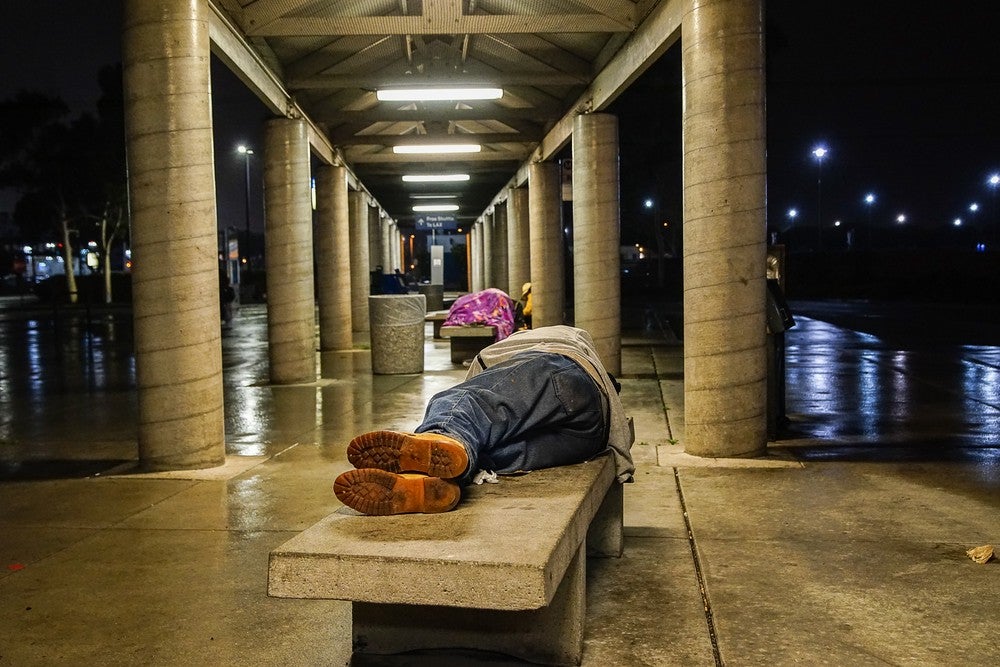
I ran into Chris outside of a strip mall along busy Venice Boulevard, where he was spending his Saturday afternoon panhandling for change near the entrance to a supermarket. He cut an unassuming figure, sporting the early beginnings of a beer belly under his plaid button-down and a flat-brim cap over his curly blond hair. The 29-year-old moved here from the outskirts of Dallas to pursue an acting career in 2016, often curling up on the couches of friends, and friends-of-friends, for weeks at a time. After a few months, he landed a small apartment near UCLA and felt some semblance of stability. After a year, however, his prospects were looking bleaker. The calls for auditions trickled to a halt, and he had run through his list of people he could bother for a favor.
Instead of moving into a shelter or paying for any kind of transitional housing, Chris chose to try to bed down in a small camping tent along an underpass last month, inspired by a stretch of pleasant weather through the summer nights. Being a nomad on public property is “unnerving,” he says, but he can’t stand the thought of being packed into a group setting. “I’m just gonna keep saving up my money, since I do work a part-time job,” he tells me, fidgeting with the rings on his fingers. “Maybe I can find someone who will room with me. I don’t think I’d be good in a crowded shelter right now. It gives me anxiety just thinking about it.”
The U.S. is seeing homelessness grow on a national scale for the first time in nearly a decade, with about 554,000 homeless people tallied in 2017, representing a 1 percent bump from the previous year. The crisis has been more dramatic in major urban cities such as L.A., San Francisco, New York and Seattle, where homeless populations have been expanding for years. Of this national population, about a quarter is considered chronically homeless, meaning they’ve been without permanent shelter for more than a year. Experts agree that the chronically homeless are the ones who need help the quickest, given that they often suffer from lingering physical or mental health problems, have the most traumas accumulated from a life on the street and use a disproportionate amount of public dollars and services to boot. Many are desperate to stop wasting away on a street corner or inside of an emergency shelter.
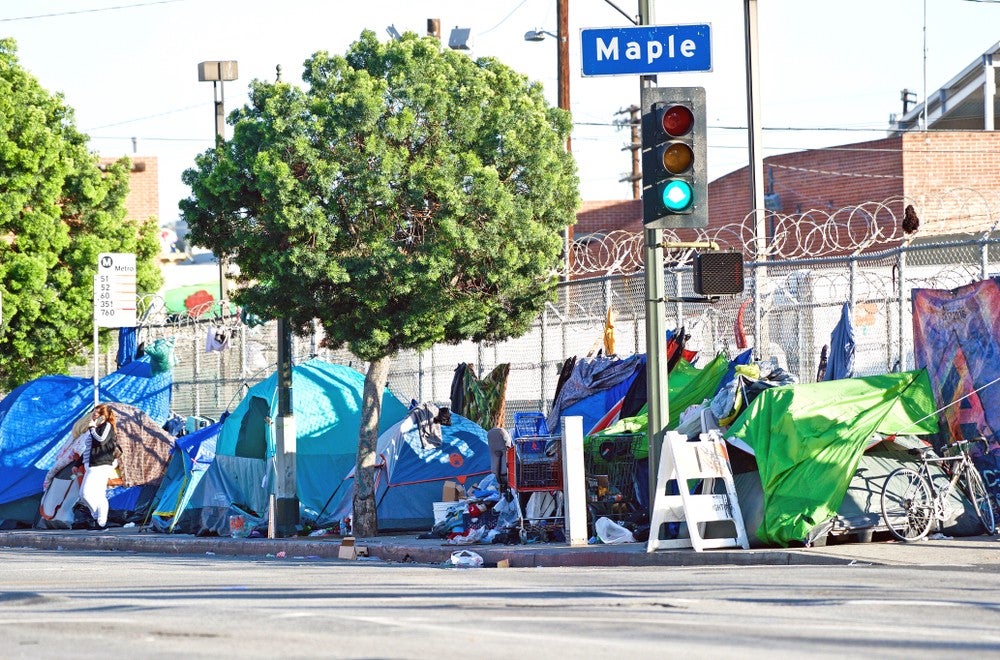
Others, however, settle into a lifestyle on the street, embracing a life of no rent, little property and few rules. Whether by setting up a home on the banks of a city’s concrete river, in a tent in its downtown center or off to the side of a train platform near new $4,000 apartments, they survive on the street through a combination of savvy, bravery and luck. These are the so-called “service-resistant” homeless, and as city and county governments try to stymie the growth of homelessness, this group of people has become a flashpoint for a debate on who deserves the public’s assistance — and how much of it they should get.
Those who refuse services or housing have long been judged by the public as individuals who have chosen to spurn society’s norms, and plans to help them have always had a punitive edge to match. San Francisco is dealing out citations to the homeless for small quality-of-life crimes (like urinating in public) and threatening arrest for those who refuse to accept assistance. Santa Ana rallied cops and sanitation workers for a massive eviction of hundreds of homeless people, with additional policies to jail people who don’t move into a shelter. L.A. has reinstated a ban on sleeping on the sidewalk, which if enforced, could criminalize the actions of thousands on any given night. New York City used to evict formerly homeless people from their shelter if they didn’t hold down a job, and more recently has offered free one-way bus tickets to its chronically homeless, to rid the city of their plight (it’s one of more than a dozen American cities with similar programs). Broadly, more than 80 cities have made it illegal to sleep in cars, and more than 60 have outlawed camping in public.
It’s a bleak picture for those who have adjusted to life on the street, but the loaded phrase “service resistant,” and the cultural view that beggars really can’t be choosers, obscures a much tougher truth: Chronic homelessness is an easy trap to fall into, and it can leave deep, lasting scars on the people who struggle with it. Homelessness experts with street outreach experience say that convincing the men who say they don’t want homes will take much longer, and require more persistent energy, than public officials anticipate.
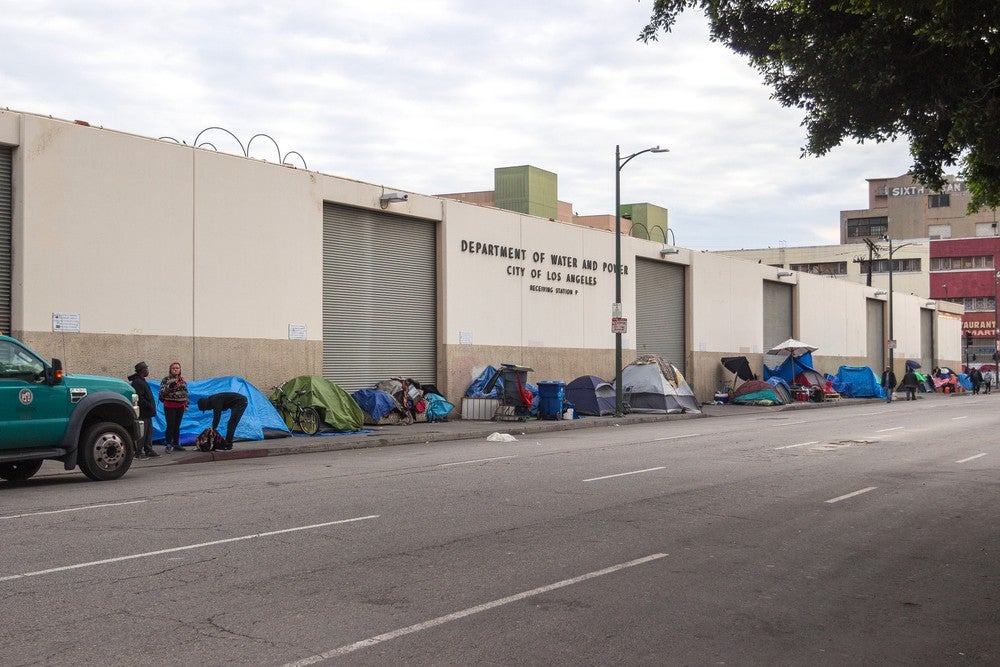
It may seem strange that someone in America would turn down the promises of safe shelter and social services, but for Herb Smith, president and CEO of the transitional shelter Los Angeles Mission, it’s a tricky reality. There are too many reasons why people end up homeless, and even more subtleties as to why they give up on returning to their old lives, Smith says. “People suffer trauma while on the street, and that can make them think differently about where they belong,” Smith says. “Even in the tents, when we do our annual survey, we come across people who say they already have a place to stay — right on the street, where they are. People need some innate desire to change to be successful. I don’t think everyone is capable of that mentally, on their own.”
Sometimes, the argument for staying homeless can sound almost convincing. So it is with Barry, a stocky, confident older man whom I spotted on the stoop of a Presbyterian church in L.A.’s Koreatown. Barry’s been homeless for just over a decade, by his latest count, and despite a rough couple of years, he’s settled into a groove. Hustling for cash is reliable enough to cover food and the occasional beer. Finding a place to sleep is easier, too, now that he knows where security guards don’t prowl. He even brags (with a wink) about the friends-with-benefits arrangement he has with a neighbor, noting with a hoarse giggle that “she don’t mind the privacy issue much when it’s dark out.”
At 66, he admits with a shrug that his old and frequent daydream of getting back into a two-bedroom house has faded into something else. “Man, what do I have to go back to now? Working some job so I can barely pay for an ugly box in the middle of nowhere? All I hear is that the economy is still bad here,” he tells me, rubbing his patchy, graying beard. “At least I can go where I want to out here. At least I can be my own man. It ain’t easy, but nothing is. Most people just think they have it easier.”
The first time I spoke with him, Barry waved away my suggestion that he call a new joint city-county homeless outreach team for help. A few weeks later, he had different news to share. He’d taken a bus down to a homeless services center in South Los Angeles after a health scare in which he nearly fell unconscious during a particularly hot day. “It’s not so much that I can’t stay out here, but apparently, I probably have a problem with my blood sugar,” he says. “And, to be honest, this is a pain in the ass, but they sound like they want to help me with some other stuff, too. I’m not sure if it’s real. But they’re asking me to come back, to keep calling them.”
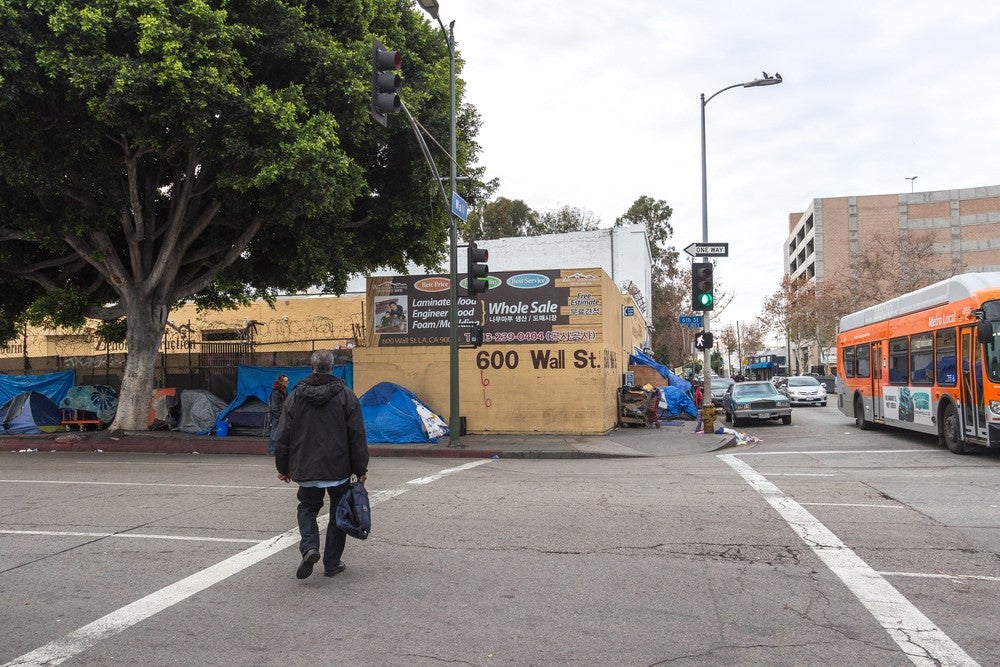
Angelia Harper, an advocate for the homeless often called by her nickname “Big Mama,” knows that establishing trust with people who feel betrayed is easier said than done. Harper used to be homeless herself, in 2006, and went through the spin cycle of landing at an emergency shelter, struggling to find transitional housing and getting sidetracked with promises from social workers that led to no results. Outdated paperwork, incorrect instructions, rude case managers, thefts and fights inside supposedly safe shelters, year-plus waits for housing with hardly any updates — Harper’s voice rises with disgust as she recounts the list of challenges for the chronically homeless. She’s now made it her job to sort out the maze for others who face those challenges, especially those who don’t buy that the system can help them.
“People think nobody really cares. It’s a cycle that can be broken, but only if workers out there can honestly say we can give you serious help right now. Not just a little here, and then a little some time from now, and then you wait to hear back for a little more,” Harper says. “The problems start when you don’t get solutions in the first year of homelessness. After two or three years, the self-brainwashing has already happened. People convince themselves they ain’t never gonna have nothing. That’s what keeps the tents up.”
Harper knows too many who have tried to land an apartment or certain government benefits only to be rejected because of a criminal record, pre-existing debt or an inability to keep a job. Others give up after finding out that they can’t bring their pet dog into a transitional shelter, or can’t move their girlfriend or boyfriend into a solo housing unit in a homeless-housing complex. Not to mention, sometimes said housing can feel more unsanitary and dangerous than being on the street. A 2015 investigation in New York City, for example, found its low-income “cluster” apartments were the “worst maintained, most poorly monitored and provide the least adequate social services” of all the options for the homeless, with vermin-infested rooms as well as faulty equipment, including a radiator that exploded and killed two sisters in 2016.
At least the street can provide freedom and a measure of personal control, as 53-year-old John Chavez found. He’s spent the better part of the last decade living on the sidewalks of Downtown Los Angeles, even while working night shifts as a security guard and doing other odd jobs. Staying in and around the chaotic homeless hub of Skid Row, Chavez grew to love the constant party of life on the street for a junkie — “I was always running into someone who was on their way to, or on their way from, er, getting party supplies.” The favored supplies were black tar heroin, crystal meth and nuggets of crack cocaine, though Chavez had the constitution to try anything at least once.
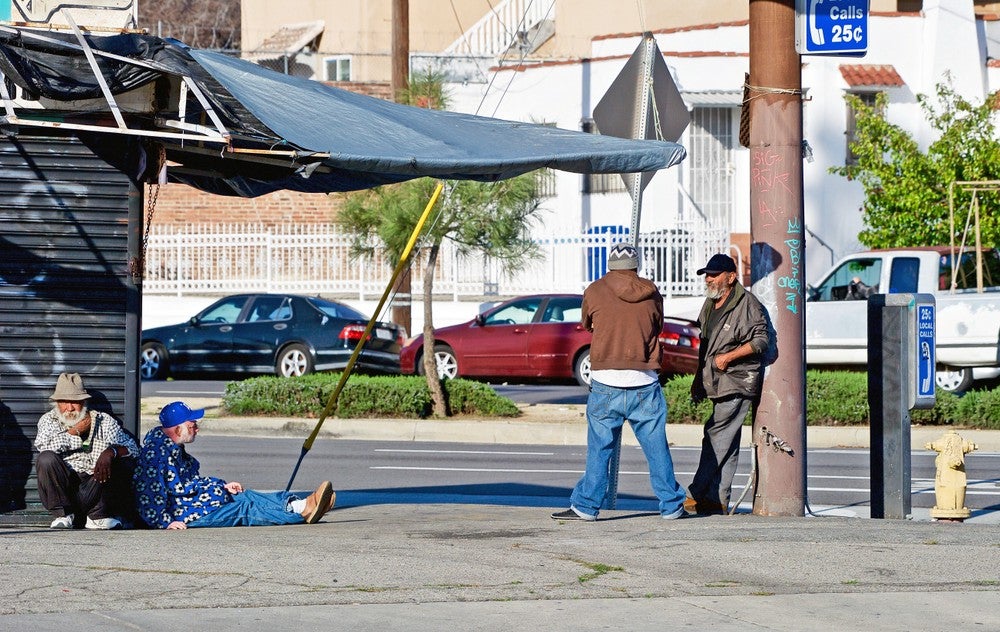
“Living in a tent is a crazy time. Anyone can come by to rob or stab you, so you have to be vigilant. You’re always on your toes. I never really stayed in my tent unless I was asleep,” he says. “But a lot of people are so conditioned to the street that they’d hardly know what to do in an apartment. You’re lying under the stars when you’re homeless. It can feel like you have everything you think you really need, and everyone you need to know, right around you.”
A terror of a teenager who rejected his stepdad and mother, got sent to a foster home at 16, stole a car from said foster home and eventually ditched the car to walk to California, Chavez learned to enjoy the rhythm of not knowing where he’d be bedding down on a given night. He spent 17 years behind bars in county jails and state prisons, for various stints on drug possession and distribution charges. Wily and self-assured from a young age, Chavez saw the criminal justice system as a game he could navigate, even if it meant landing in lockup every few missteps. And when Chavez donned his street clothes and strolled through the exit for released felons, he often landed right back on the street, pitching his tent on the cleanest patch of Downtown L.A. sidewalk he could find.
As he grew older, the fear that he’d die in prison as a “nobody junkie” pushed Chavez toward reform, and he’s spent the last several years both sober and working a legal grind to clear his record of fines and lingering criminal charges. Staying on the street, however, remained. Earlier this summer, he was posted at an intersection near Downtown L.A.’s “Toy District,” at least until city workers came to kick the sidewalk dwellers off for a proposed “beautification” of the street. Chavez is no fan of shelters, and he also notes that the confines of low-income buildings for the homeless routinely hide drug dealing, prostitution and gang business. “These single-room occupancy buildings, with the cheap rooms, have a lot of people in them who deal dope. I was staying strong in my addiction recovery, and I had a good group around me, but we addicts are one drink or slam away from being back at square one,” Chavez says. “At least I could pack up and walk away from my corner on the street, rather than have people always know where to find me.”
The number of chronically homeless has decreased by 27 percent since 2007. What’s worked is the advent of the “housing first” strategy, which puts priority on getting the neediest people into their own permanent apartment as quickly as possible, without worrying about eligibility standards like drug use or counseling (and with the belief that those pieces will fall into place once someone is stabilized with a place to live). Meanwhile, major cities are considering changing up the options the homeless have for accomodations, with officials in San Diego, San Francisco, L.A. and other locales considering open “tent-city” type plans, flexible group trailers and other ideas. “One thing people don’t understand is that the street is a community. People are looking out for each other,” Los Angeles Mission’s Smith says. “We can’t be disrupting people by telling them they should be grateful for a space in a shelter and a shower.”
Convincing tens of thousands of others around the country will require an unprecedented level of face-to-face outreach and follow-ups to keep people on track, with faith that patience will lead to long-term benefits. “We need more outreach workers and more case managers, as soon as possible,” says Brandie McFarland, lead case manager at Union Rescue Mission in L.A. “We’re not even close to having enough people to reach the people in tents and on the sidewalks. There’s often only a small window of time that someone is in the mood to talk about getting help, so contacting them is crucial.”
Case in point: About 20 minutes after Chavez was told to pack up his tent and get off his corner for the city’s “beautification” project, he spotted his case manager ambling down the street toward his old spot. In her hand was a lease for a subsidized one-bedroom apartment in Wilmington, about 45 minutes from Skid Row. “I must tell you, obtaining housing was a very, very difficult process,” he tells me. “I have a key now, though. It took me 20 years to get off parole, but here we are.”
